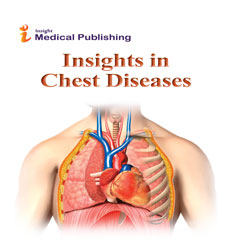Public Health Impact and Risk Factors Associated With Uterine Leiomyomata Among Women In Imo State, Nigeria.
Eze Chinwe Catherine
Federal University of Technology, Owerri Imo State,Nigeria
Received Date: 2022-02-07 | Accepted Date: 2022-02-15 | Published Date: 2022-02-24Eze Chinwe Catherine
Federal University of Technology, Owerri Imo State, Nigeria
Received date: 2022-02-07 | Accepted date: 2022-02-15 | Published date: 2022-02-24
Abstract
Uterine fibroids (UF) are benign soft-tissue tumours that arise from uterine smooth muscle tissue (myometrium) .Although uterine leiomyomata affect the reproductive health and well-being of approximately 25% of premenopausal women, risk factors are poorly understood. Objective: To examine public health impact and associated risk factors associated with UF among women in Imo State. Materials and Methods: a three year epidemiological, non-interventional, retrospective and descriptive study research was carried out .The data of all female patients (ages 20-49) within the inclusion criteria that presented with UF during the study period 3rd January 2016 to 3rd January 2019 was obtained from medical records, theatre records of gynaecology clinics and Laboratories selected in Imo State. Result: A total of 3825 subjects were studied. Fibroids mainly affected those in the reproductive age group (31-40 years). The common clinical presentations- were abdominopelvic mass (95%); menorrhagia (98.7%), amongst other symptoms. A significant relationship was found between Level of Education and development of fibroid (R= -0.196; χ2 value= 29.618; p = 0.001). Majority of the women 88 (44.4%) had tertiary education, (24.7%) secondary, (24.3%) primary and (6.6%) had no formal education. Conclusion: we identified nine possible risk factors that play an important role in UF epidemiology. The UF risk factors with the strongest evidence were age, weight and parity. Health intervention programmes and healthy lifestyle should be encouraged with routine check-ups should be conducted so as to detect and possibly treat such tumours early.
Open Access Journals
- Aquaculture & Veterinary Science
- Chemistry & Chemical Sciences
- Clinical Sciences
- Engineering
- General Science
- Genetics & Molecular Biology
- Health Care & Nursing
- Immunology & Microbiology
- Materials Science
- Mathematics & Physics
- Medical Sciences
- Neurology & Psychiatry
- Oncology & Cancer Science
- Pharmaceutical Sciences
